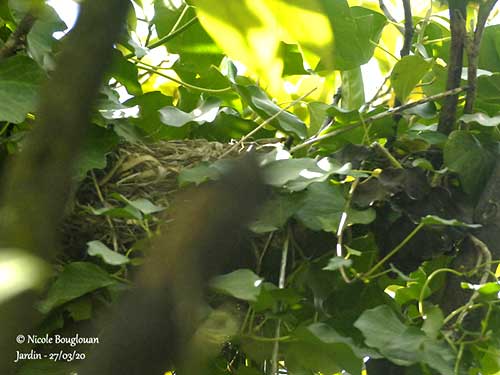
Text and pictures by Nicole Bouglouan
The text was written by Nicole Bouglouan, following an observation in the backyard, from Sunday March 29 to Monday April 27, 2020.
All the pictures and the text of this page are owned by Nicole Bouglouan.
These images and the text are subject to copyright and cannot be used without express authorization from the owner. Legal issues
Reproduction of the Common or Eurasian Blackbird (Turdus merula) in the garden
From late March to early May 2020
Formerly common in the countryside, the Common Blackbird is living today close to our homes where it enjoys some protection, food and nesting-sites ... for our greatest pleasure. Its melodious song given in the early morning is a very pleasant way to wake up and start the day off right.
We have large Cherry Laurel hedges (Prunus laurocerasus) in our garden, a type of habitat particularly appreciated by the blackbirds. The large, green leaves and the thick foliage of the ivy that covers the branches constitute a haven of peace to build a nest and raise the young.
This year, randomly at a glance through the office window, we discovered less than three metres from the pane, a beautiful nest under construction. It was March 27, 2020.
The female arrived quickly with the bill full of moss and mud that she deposited in the cup to then pack and shape the whole using her body, and especially by pressing the breast against the inner wall of the nest.
ALL THE PHOTOS WERE TAKEN THROUGH THE WINDOW PANES

The Common Blackbird breeds in spring and usually produces three clutches. The female builds a robust, bulky nest among the vegetation, at low height but well hidden, fixed in a three branches’ fork or along a branch. Here, the nest is about four metres above the ground.
The nest is an open cup made with dry grasses, straw, fine twigs, moss and mud. The female living in my garden tears off the moss from the ground and dampens it in the water reserved for birds. Then, she trails it through the dry earth before to add it to the construction in order to embed the various elements between them.
The interior is lined with fine and soft grasses, and it is common to see pieces of white paper or plastic on the exterior of the nest, mixed into the woven stems.
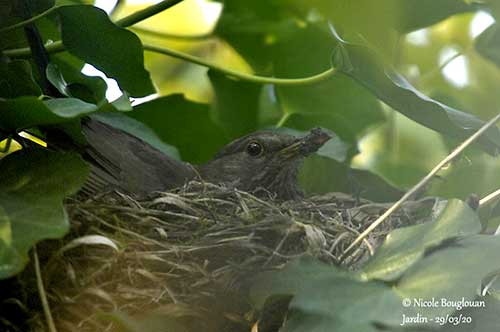
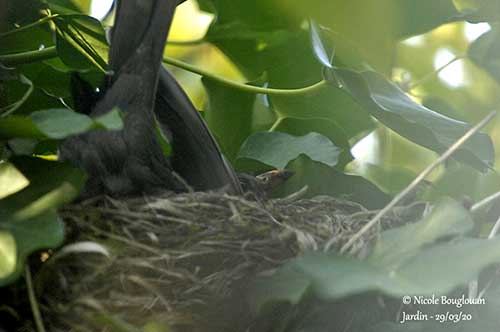
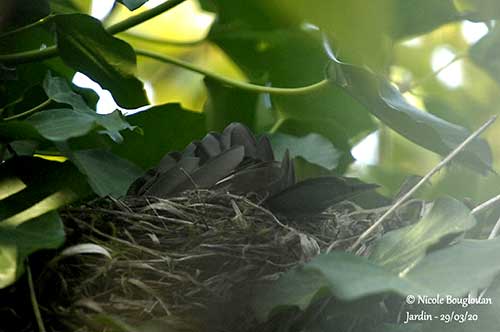
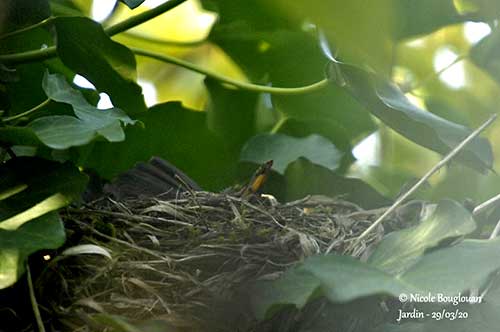
The following days, the female remained on the nest, incubating the eggs probably laid around April 5. The male would come every day from time to time when she was away, look closely inside the nest and leave. On her return, the female also inspected the bottom of the cup before settling in and incubating again.
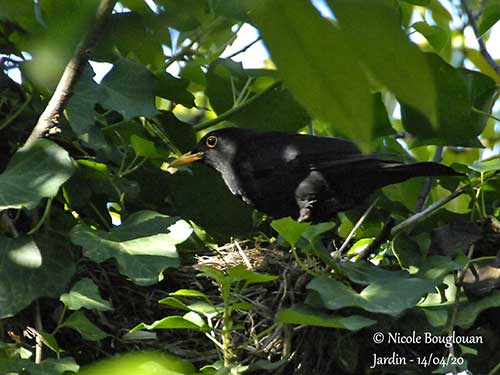
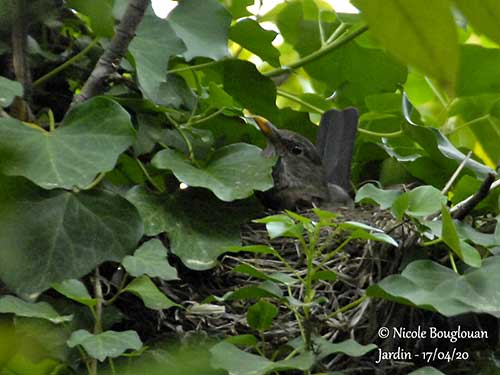
And on April 19, the day after a brief but violent thunderstorm accompanied by wind and heavy rain, the male arrives and dives inside the nest head first. Right after its departure, the female returns and incubates again.
But a bit later, we saw the male returning with food, two or three worms that fidget in its beak. There has therefore been at least one birth and the chick is fed immediately. The female then returns to the nest and we leave them alone.
Tomorrow will be another day…
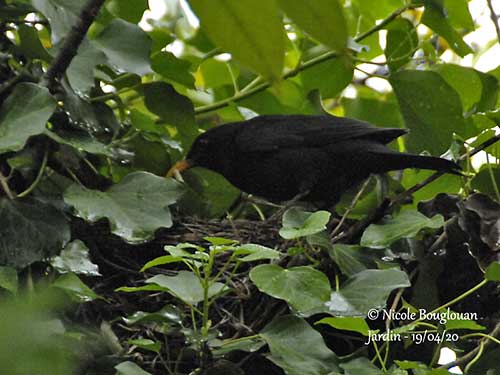
On April 20 in the morning, the female is on the nest, well awake but slightly agitated. She lifts her body in order to look below and flies away. She returns a few moments later with the bill full of worms. She gives this food to a small, invisible bill and makes sure everything is going well before flying away.
A moment later, the male appears, bringing a small prey. It gives the food to the chick by bending down into the nest because the little one is at the bottom of the cup. It also waits for the food to be correctly swallowed before leaving.
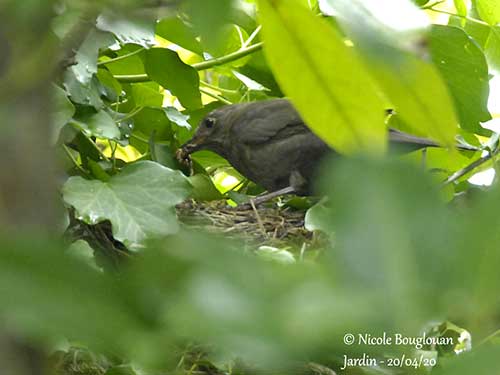
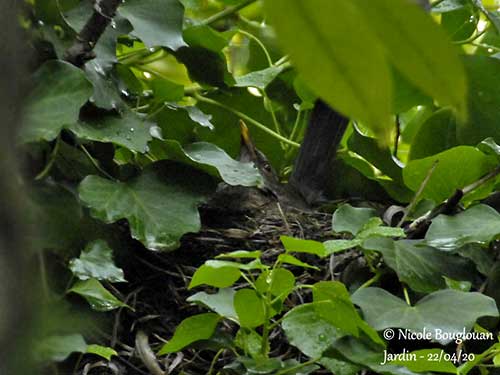
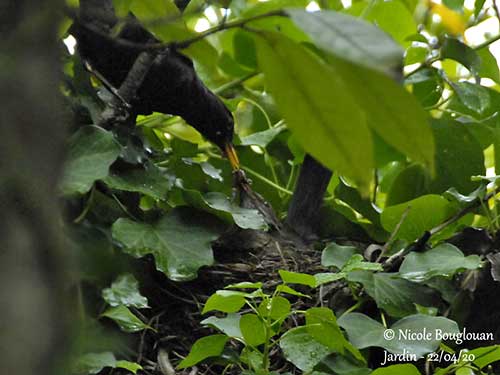
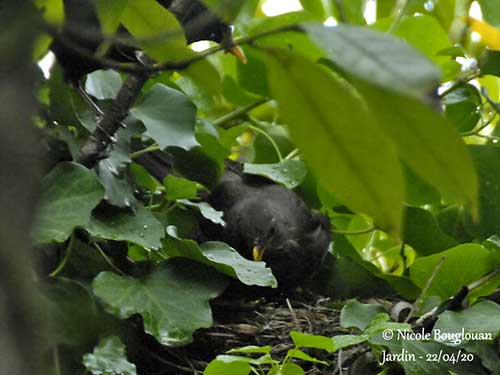
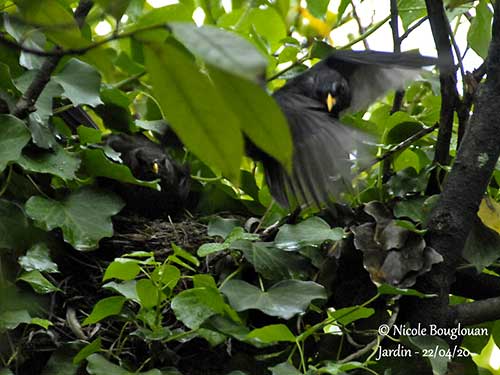
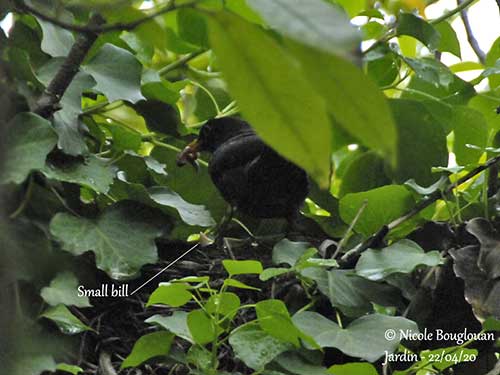
The next day April 23, the same behaviour was observed and after the passage of food from male to female, the latter fed the chicks. After making sure everything was going well, she left.
A few minutes later, the male returns, and this time, it feeds the hungry little bill itself.
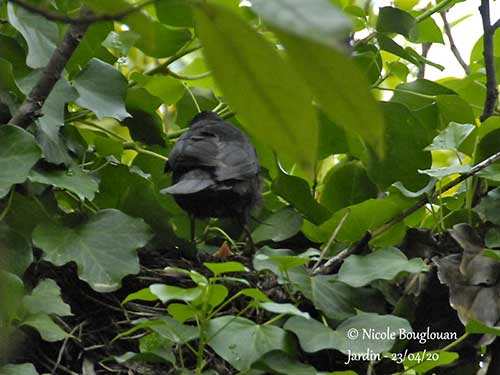
On April 24, when the male arrives at the nest with worms, we are delighted to see a second fluffy head with a wide open bill. So we have two chicks begging food from adults.
We also find that the prey is larger. Everything seems well managed!
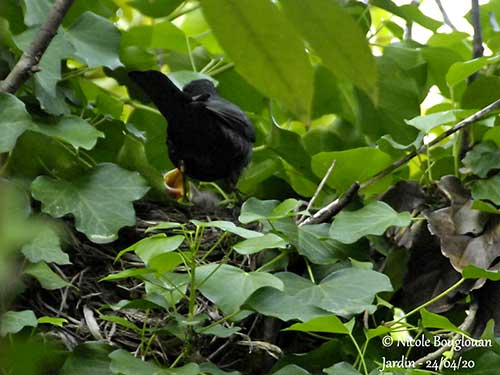
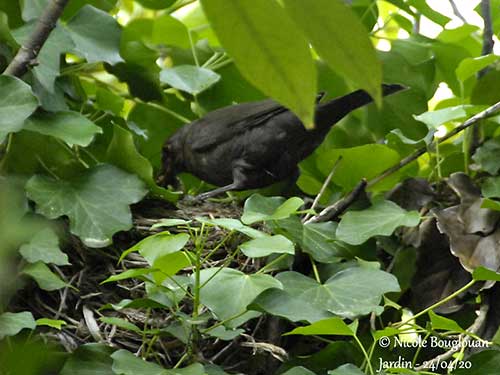
On April 25, another observation will occupy part of the afternoon.
The male arrives at the nest with a fairly large prey, a kind of white larva. Immediately, a small bill rises and opens to receive it, but it does not pass! The male leaves without seeing what is happening.
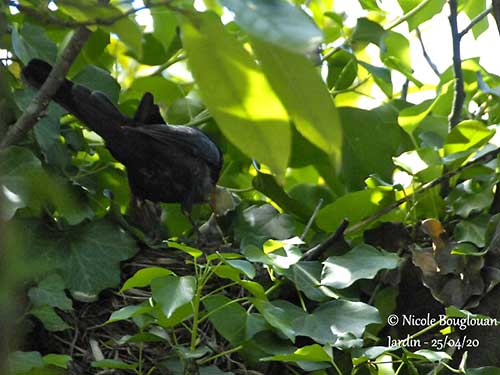
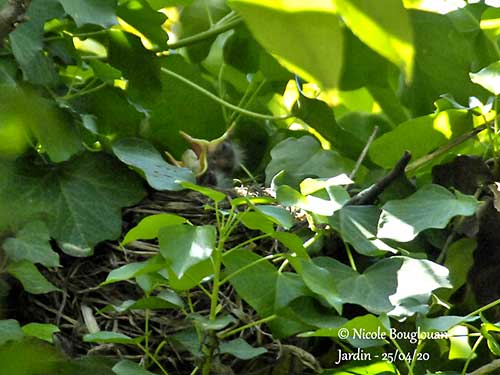
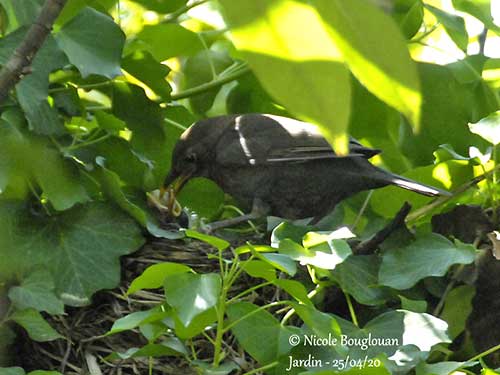
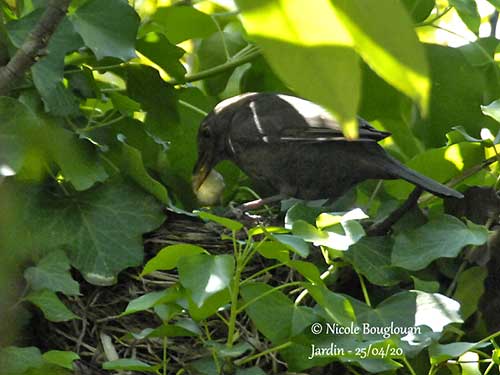
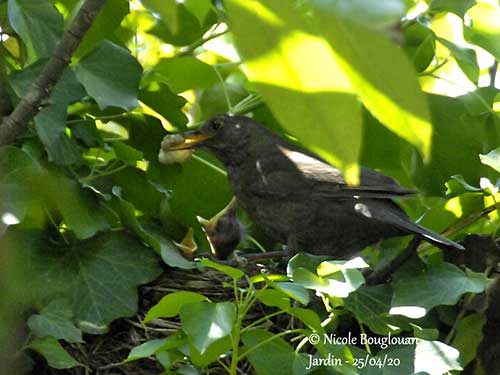
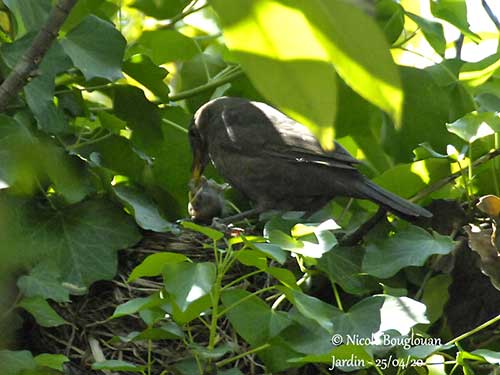
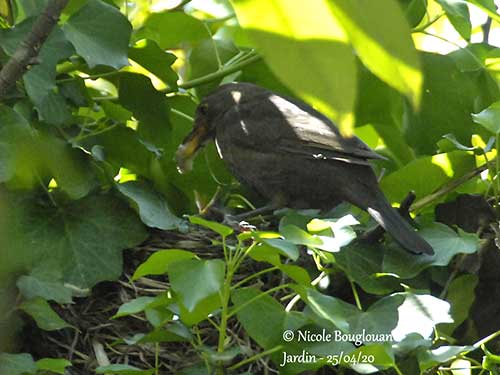
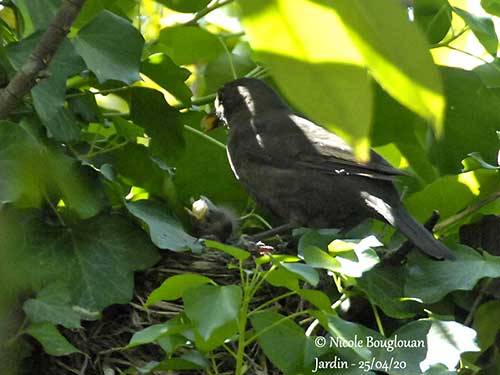
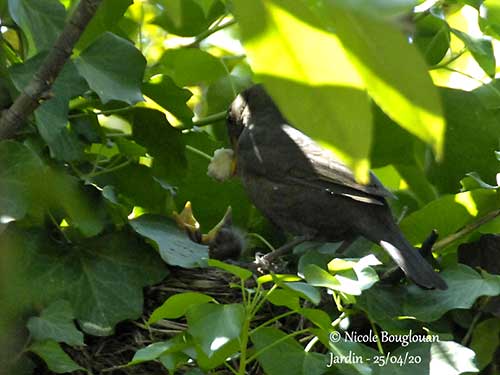
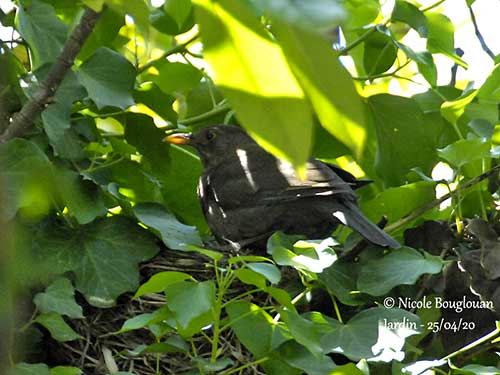
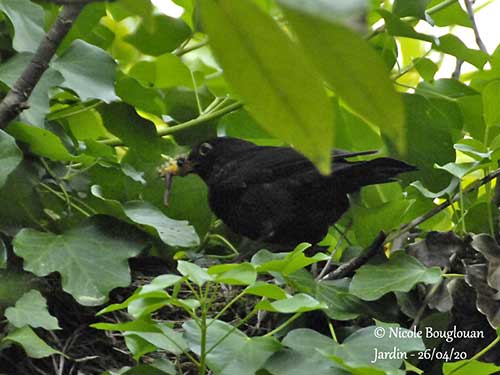
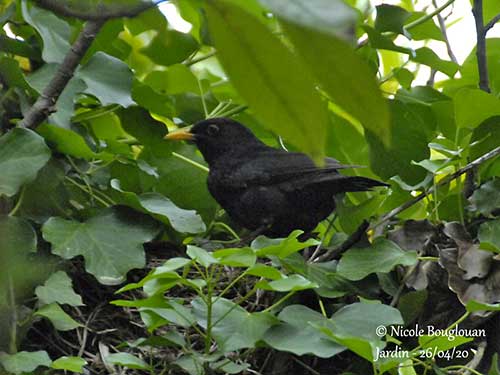
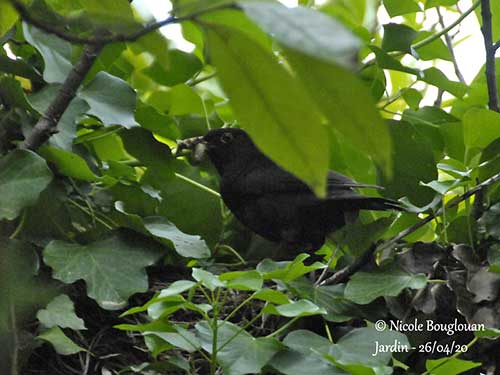
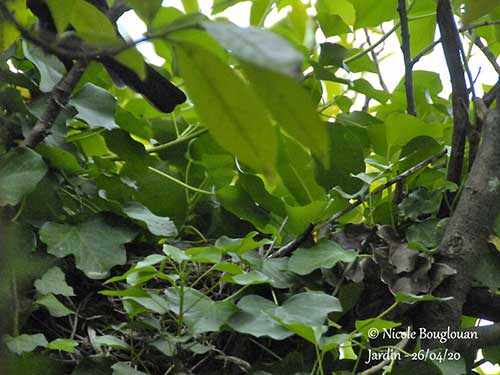
We have no idea what happened between 10 and 11 a.m. If the female brooded at 10 a.m., the chicks were probably alive. At 11 o'clock, either they were dead or they had disappeared from the nest. Could there have been a predator? There are quite a few magpies in the area. But we were not far away and we did not hear any alarm calls. Or poisoning with prey? There are still pesticides in the gardens. Or an invasion of parasites? There are quite a few ants right now. Actually, we don't know.
During the day, we saw the couple who did not seem affected by the loss of the young.
The male sang as usual in the late morning and late afternoon. As for the female, she came to peck in the grass as if nothing had happened, next to the terrace where we were resting.
The birds normally follow a seasonal program. They must reproduce and do so against all odds. If a brood fails for one reason or another, they will produce one or more replacements until the end of the season. This is so, especially for resident and sedentary birds.
And that's what's going to happen with our two adults. However, they rarely use the same nest and will therefore build a d new one. Nature is thus made.
Wish them good luck! But see the good news at the bottom of the page!
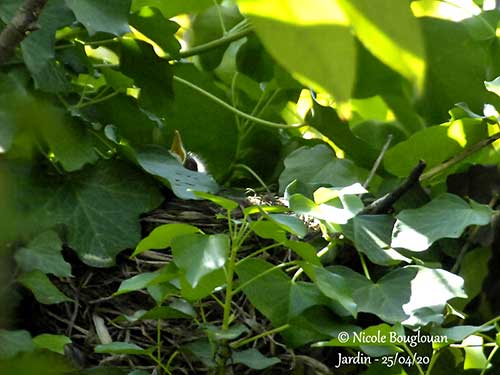
CONCLUSION:
After a difficult climb in the wet and tangled hedge (that's why birds love it!), our conclusion is as follows :
The nest is very clean, no droppings or eggshells, even less unhatched eggs because parents clean up as they go.
But there is no body either ...
So we deduce that a predator went through there in the absence of adults because, as I said before, we heard no alarm calls.
As the nest is intact, there is not a stick sticking out and the grasses are still perfectly woven, we believe that it is a winged predator which will have landed on the edge of the nest and will have taken the chicks, both at the same time or one after the other, without touching anything.
Cats and rodents should have climbed and hung on to the nest, so with some damage.
There are no snakes in this urbanized area, so we also exclude this possibility.
In the area, we have two species of predators, the Eurasian Magpie and the Eurasian Jay, but especially the magpies. I happened a few years ago to hunt a magpie that had stolen a blackbird egg from this same hedge. With gloves, I picked up the pale green egg that was intact and carefully put it back in the nest, which already contained two, but the adults never came back.
In the same way, I sent away three jays attacking a nest of European Greenfinch built at the top of a young tree. The chicks were already born because I saw the adults bringing food.
I saw a Black Kite circling above the neighborhood on Sunday morning, but it was high up, and these raptors are not renowned for their hunting skills. In addition, I don't know how it could have sneaked between the branches and taken the young ones without damaging the nest.
So this is the end of a story that I would have liked to tell you until the end, but Nature decided otherwise. As I told you previously, our blackbirds will produce another brood, but certainly in a new nest.
GOOD NEWS !
Today, Tuesday April 28, 48 hours after the chicks disappeared, I just saw the female with a large mustache of twigs and herbs in the bill, at the bottom of the hedge. I observed her, and she went up to the top of a medium-sized tree on which the ivy grows well. At the fork, the ivy forms a sort of "cushion" and I suppose that is where she will build the nest, a place already used several times by other blackbirds for years, just opposite from our porch.
We will not follow this nest because there, it is impossible without disturbing them. If the young come out of the nest, we will probably see them in the garden, but we will not do more.
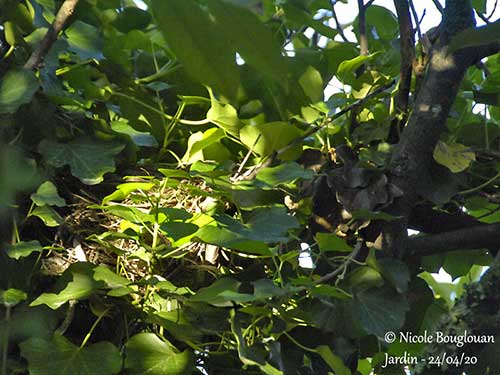
The nest in the
morning sun